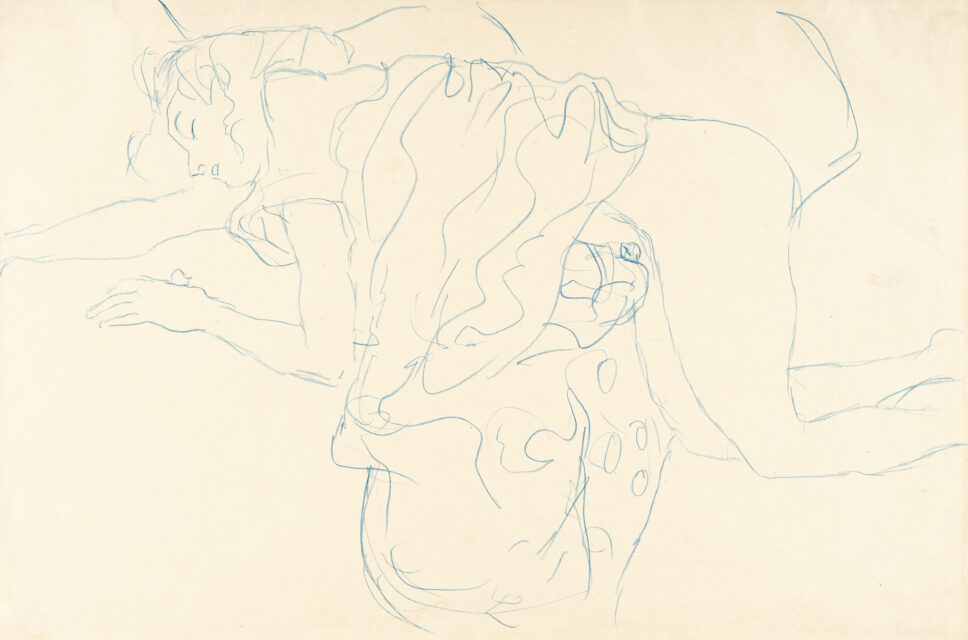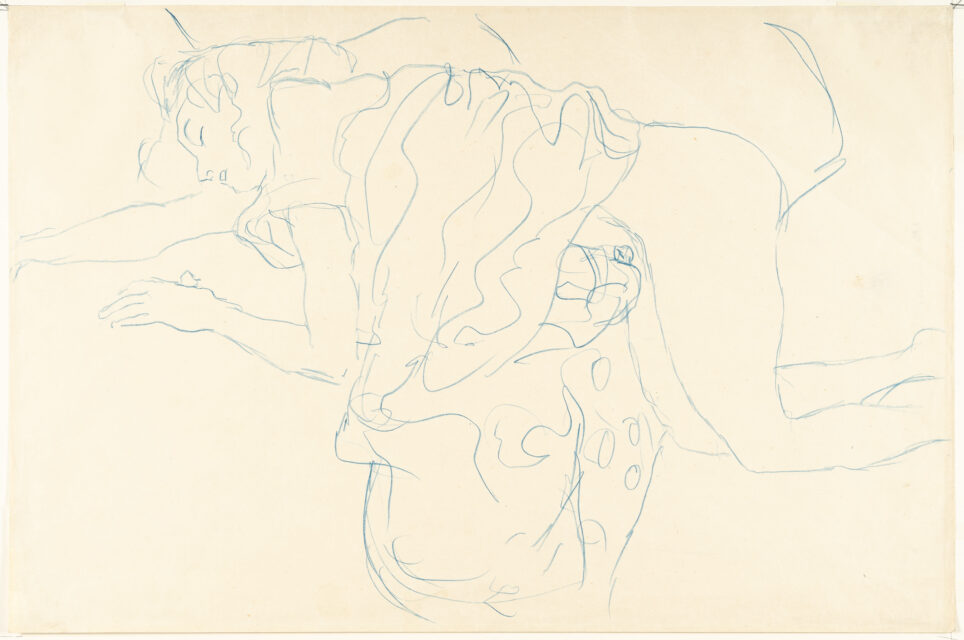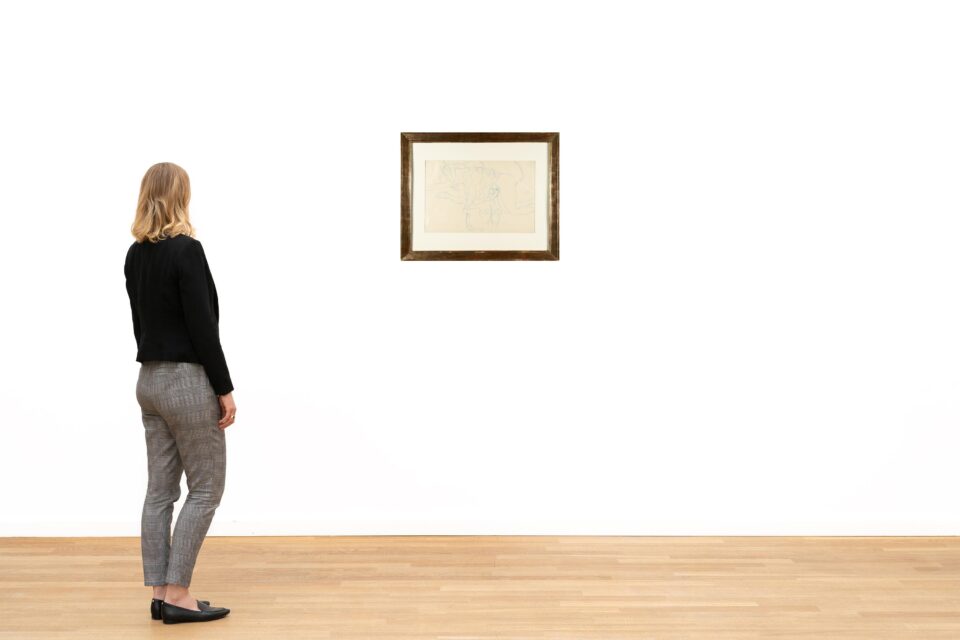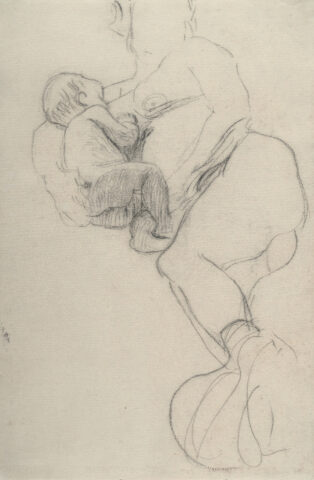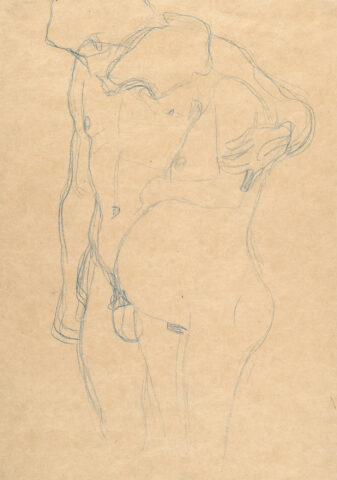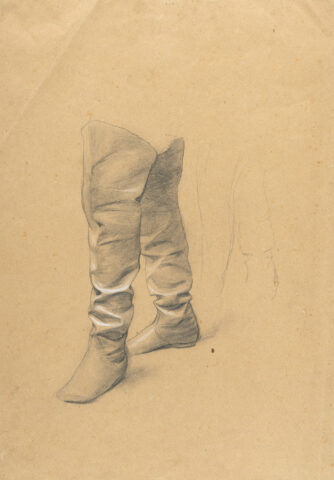
Kneeling demi nude facing left
Details
Handwritten inscription “N 16.” and “144” on the reverse.
Strobl 2335.
Exhibition:
Gustav Klimt, Oskar Kokoschka, Egon Schiele: Dessins et watercolours, Salle Saint-Jean, Hôtel de Ville, Paris a.o. 1984, cat. no. 23;
Gustav Klimt 1862-1918, Nassau County Museum of Art, Roslyn, New York 1989, no cat. no;
Gustav Klimt: 100 Drawings, Jahrhunderthalle Hoechst, Frankfurt/Main and others, 1990-93, cat. no. 52;
Gustav Klimt, Palazzo Strozzi, Florence 1991, cat. no. 80;
Gustav Klimt, Pałac Sztuki, Krakow 1992, no cat. no;
Hommage à Serge Sabarsky. Klimt. Kokoschka. Schiele. Watercolours and Drawings, Jahrhunderthalle Hoechst, Frankfurt/Main 1997, cat. no. 19.
Provenance:
Collection Franziska (Fanny) Klimt, Vienna, sister-in-law of the artist;
Historisches Museum, Vienna, with the stamp and inv. no. “74930” and handwritten “242” on the reverse;
Serge Sabarsky Collection/Asset, New York, received in exchange from the aforementioned in 1983;
Collection/Foundation Vally Sabarsky, New York.
Description
– A central theme in Klimt’s work is the depiction of the naked and sexually aroused female body
– Inspired by Japon’s erotic woodcuts, Klimt stages a strong female figure with just a few strokes
– Klimt’s attitude towards female sexuality, which was progressive for the time, becomes clear in this work
“A construction with expressive forms takes place. These nudes and semi-nudes are spread out like a landscape, a mountain range.”
Alice Strobl
In 1912 and 1913, Gustav Klimt’s work was characterised by the completion of the famous portrait “Adele Bloch-Bauer II” as well as the portraits of Paula Zuckerkandl, Mäda Primavesi and Eugenie Primavesi. Parallel to the final stages of work on the portraits, Klimt was already working on two new motifs: “Danaë” (for which a painting of the same name had already been created ten years earlier) and “Leda”. In these allegories, Klimt continued his fantastic compositions on death, life and female sexuality and also revisited mythological themes from the erotic adventures of Zeus, the father of the gods. Stylistically, the mature late works are characterised by colourful, wildly patterned fabrics against monochrome dark backgrounds. Gustav Klimt presented the painting of “Leda”, completed in 1916/17, at the “Austrian Art Exhibition” in Stockholm in September 1917 along with 12 other oil paintings. In 1945, it was destroyed in a fire at Immendorf Castle, which was used as an art depot.
Klimt’s creative process is characterised by the numerous preparatory drawings in which he worked through the figures of his compositions in countless variations. Klimt’s focus on the medium of drawing was even more pronounced between 1912 and 1913 than in other periods of his work. It was these works “which Klimt repeatedly showed alongside individual paintings at exhibitions in Germany and which helped his art achieve a breakthrough there.” (Strobl vol. III, p. 45). Klimt’s endeavours to capture painterly details were increasingly intensified at this time and he developed an impressive range of variation, particularly in his lines. In the preparatory drawings for the theme of “Leda”, “(…) the nudes and semi-nudes unfold both in depth and parallel to the picture. (…) The insular emergence of some body parts from robes and draperies – already hinted at in 1910 (…) – is heightened to the highest degree by the effects of light, but also by the use of blue and red coloured pencils, and sometimes also by the heightening of white. Added to this is a very eloquent body language. States of relaxation can be found as well as depictions of extreme tension.” (Strobl vol. III, p. 48).
* All results incl. buyer’s premium (27%) without VAT. No guarantee, subject to error.
** All post-auction prices excl. buyer's premium and VAT. No guarantee, subject to error.
*** Conditional Sale: The bid was accepted below the limit. Acquisition of the work may still be possible in our post-auction sale.
R = regular taxation
N = differential taxation on works of art which originate from a country outside of the EU
The private or commercial use of images shown on this Website, in particular through duplication or dissemination, is not permitted. All rights reserved.


